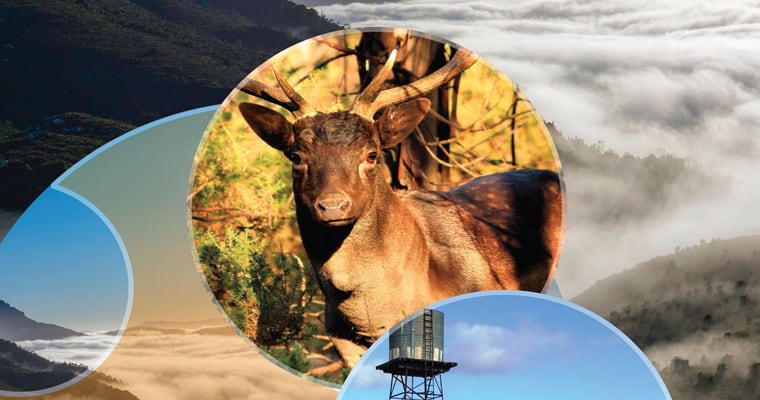The Invasive Species Council has warned that Australia is failing to meet its World Heritage obligations, as a new international report finds invasive species remain among the most destructive and widespread threats to Australia’s most treasured natural sites.
The 2025 IUCN World Heritage Outlook Report, released over the weekend, shows that invasive species and climate change are “by far the most prevalent current threats” to natural World Heritage sites in Oceania. In Australia, invasive species are rated as a current high or very high threat to 9 of the 12 sites listed for their ‘outstanding and universal’ biodiversity values.
‘This report is a wake-up call. Invasive species are tearing through the places that define Australia’s global reputation for natural beauty and outstanding biodiversity values,’ Invasive Species Council Policy Director Dr Carol Booth said.
‘From feral cats hunting mammals in Kakadu, to fire-fuelling buffel grass taking over in Uluru and myrtle rust killing ancient trees in the Gondwana Rainforests – the damage is relentless and accelerating.
‘If we can’t defend our World Heritage sites, we’re failing at the most basic test of environmental protection.
‘Our environment laws still aren’t designed to deal systematically with the biggest threats to nature. The current EPBC Act reforms focus mainly on development approvals, but we also need urgent reform to strengthen how we prevent and control invasive species.
‘Strengthening live-import laws, driving a more systematic approach to threat abatement and establishing a dedicated fund to tackle catastrophic invasive threats would be both environmental and productivity reforms.
‘When we invest properly, the results are remarkable. Macquarie Island, the only World Heritage site in Australia, and one of very few globally, to improve in the latest report, has rebounded spectacularly since rabbits and rodents were eradicated. We’ve seen the same success on Lord Howe and Dirk Hartog islands.
‘These examples prove what’s possible – wildlife bounces back fast when we remove the threats. What’s missing are the laws, leadership and long-term funding to make that the rule rather than the exception.
‘Australia’s World Heritage areas are more than just ecological treasures – they’re economic powerhouses that support tens of thousands of jobs. Rigorously defending them from threats is not only the right thing to do, it’s smart nation-building.
‘Australia’s World Heritage areas are worth billions to the economy and priceless to our identity. Protecting them is a test of leadership and national responsibility.’
Media inquiries: (02) 8006 5004
Photo: AAD.








